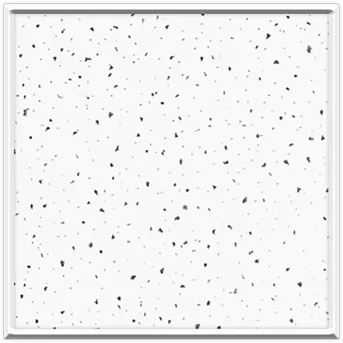Nov . 18, 2024 16:06 Back to list
access panel ceiling
Understanding Access Panel Ceilings Essential Insights for Modern Construction
In modern architecture and construction, the aesthetic and functional aspects of a building are equally vital. Among the myriad elements that contribute to a well-designed space, access panels in ceilings often play a critical but underappreciated role. This article delves into the nature of access panel ceilings, their benefits, types, installation methods, and maintenance, providing essential insights for both professionals and homeowners.
What Are Access Panels?
Access panels are specialized openings within a wall, ceiling, or floor that provide entry to concealed mechanical systems, plumbing, or electrical wiring. In a ceiling context, access panels are crucial for maintaining and servicing components like air ducts, sprinkler systems, or electrical fixtures without the need to dismantle the entire ceiling structure.
Benefits of Access Panel Ceilings
1. Convenience for Maintenance Access panels facilitate easy maintenance and inspection of essential systems while minimizing disruption to the overall structure. Regular access allows for timely repairs and adjustments, enhancing the longevity of equipment.
2. Aesthetic Versatility Modern access panels can be designed to seamlessly blend into ceilings, minimizing their visual impact. They come in various finishes and styles, ensuring continuity with the design aesthetic of the space.
3. Safety and Compliance In many jurisdictions, building codes necessitate access points for safety measures, especially concerning fire suppression systems. Utilizing access panels helps ensure compliance with safety regulations, reducing potential liabilities.
4. Space Optimization By providing necessary access without extensive modifications to walls or ceilings, these panels optimize interior space usage. They allow for functional design without compromising the usability of the area.
Types of Access Panels
Access panels can be categorized based on their material composition, functionality, and use case
1. Material-Based Panels - Drywall Access Panels These are the most common type, typically made of metal or plastic, and designed to blend in with drywall ceilings. - Metal Access Panels Often used in commercial spaces, these panels provide enhanced durability and are fire-rated for added safety.
access panel ceiling

2. Functionality-Based Panels - Hinged Access Panels These can swing open for easy access, making them ideal for frequently serviced areas. - Removable Panels Instead of hinges, these panels can be entirely removed, providing wide access to larger systems.
3. Specialty Panels - Fire-Rated Access Panels Designed to seal off areas to prevent the spread of fire, these panels are crucial in fire safety compliance. - Intumescents Access Panels These panels expand when exposed to heat, forming a barrier against flames and smoke.
Installation Considerations
The installation of access panel ceilings requires careful planning. Here are key considerations
1. Location Panels should be strategically placed to ensure easy access to the underlying systems while maintaining aesthetics. Locations often include above bathrooms, kitchens, or mechanical spaces.
2. Support Structures Proper framing and support are necessary to ensure that panels are securely mounted and can withstand repeated use.
3. Sealing and Insulation In areas where temperature control is critical, ensuring proper sealing around panels is essential to maintain energy efficiency and prevent drafts.
Maintenance of Access Panels
Regular inspection and maintenance of access panels are essential to ensure their functionality
- Visual Inspections Periodically check panels for misalignment, damage, or wear. - Cleaning Dust and dirt can accumulate, especially in areas with mechanical systems. Regular cleaning helps maintain performance and appearance. - Functional Testing Ensure that hinges and locking mechanisms operate smoothly, as ease of access is crucial for efficient maintenance.
Conclusion
Access panel ceilings are a critical component in modern building design, serving both functional and aesthetic purposes. Understanding their benefits, types, and installation considerations can help builders, architects, and homeowners make informed decisions that enhance both the efficiency and look of their spaces. By investing in quality access panels and maintaining them properly, the smooth operation of hidden systems becomes a seamless aspect of building management.
-
Quality Ceiling Trap Doors & Access Panels | Easy & Secure AccessNewsAug.30,2025
-
Durable Ceiling T Grid Systems | Easy InstallationNewsAug.29,2025
-
PVC Gypsum Ceiling: Durable, Laminated Tiles for Modern SpacesNewsAug.28,2025
-
Pvc Gypsum Ceiling Is DurableNewsAug.21,2025
-
Mineral Fiber Board Is DurableNewsAug.21,2025
-
Ceiling Tile Clip Reusable DesignNewsAug.21,2025







